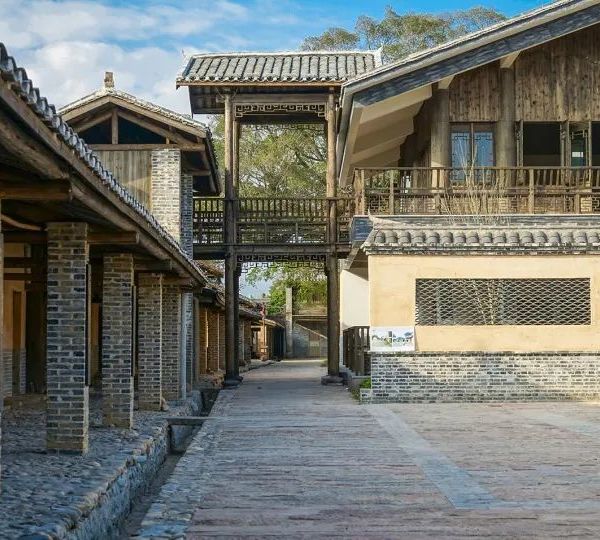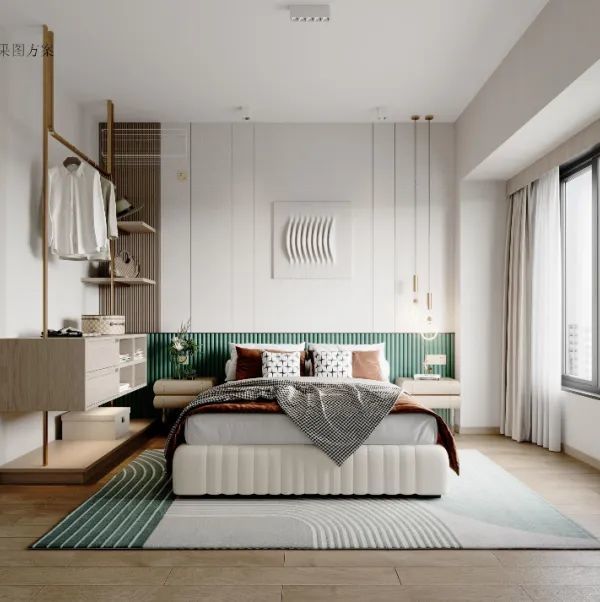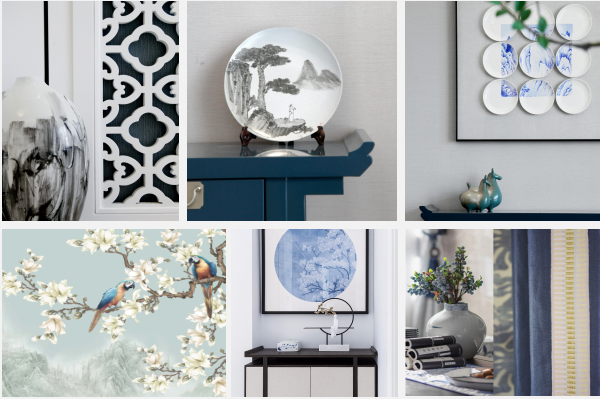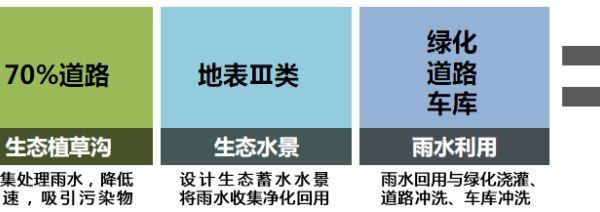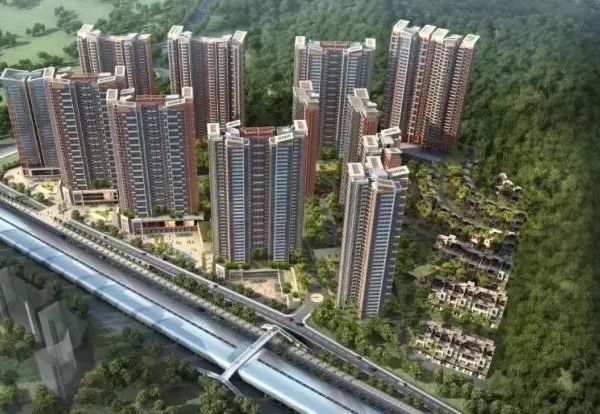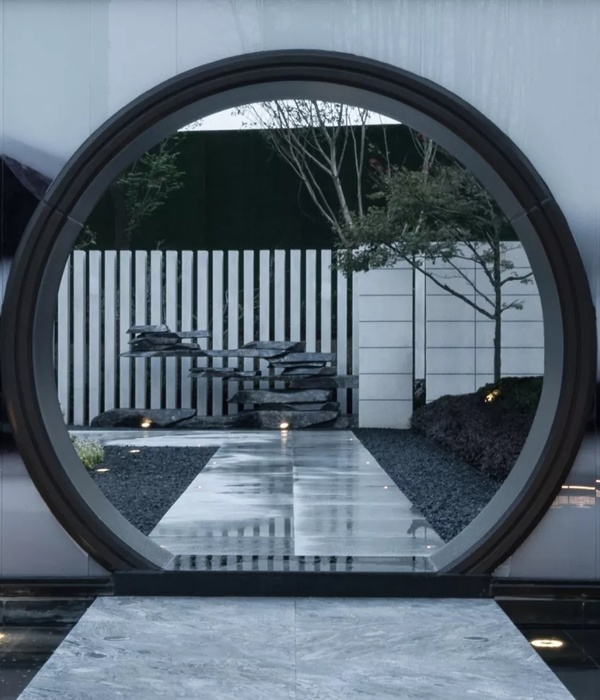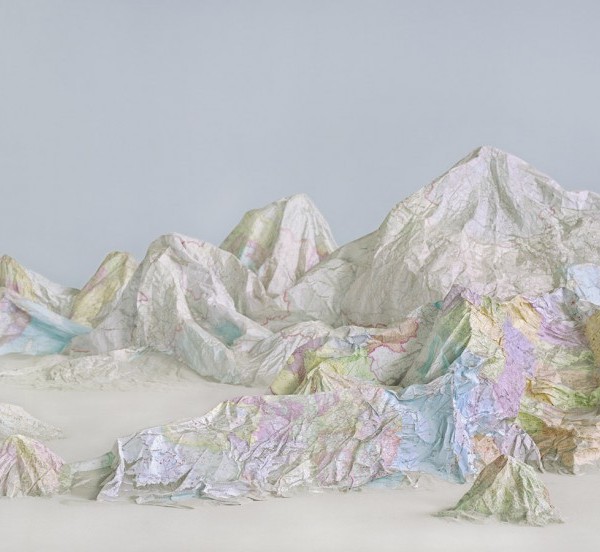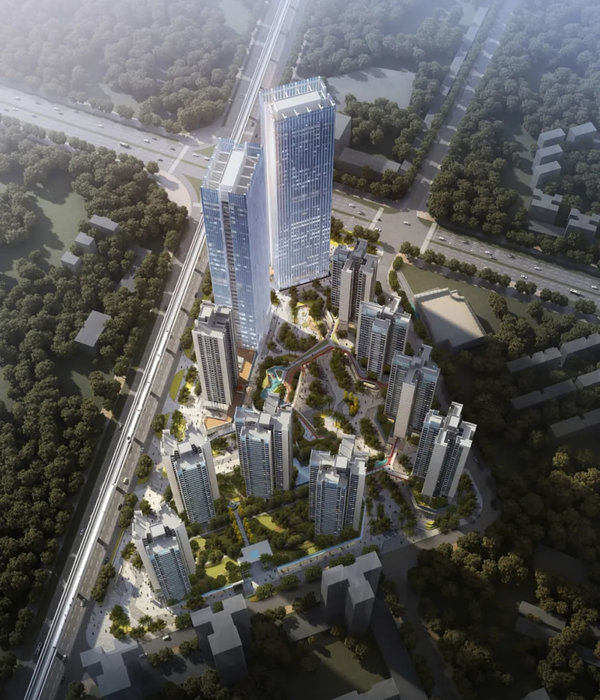“这是一个通过非传统图示表达,结合缜密分析与优美设计语言的可持续、多方面的泄湖社区发展规划。其结合自然与人造堤坝的设计有力地解决了生态旅游、环境保护、经济发展、和社区建设的综合问题。堤坝概念通过缓解海滩生态系统的环境压力和激发社会与经济发展机遇,创造了一个连通滨海、泄湖、与内陆的包容性区域社区框架。” – 2019年评审委员会
“This substantial and multi-faceted plan, delightfully illustrated with nontraditional graphics, marries robust analysis with beautiful design interventions for the sustainable development within a lagoon community in the Yucatan Peninsula. The power of the plan, whose design elements focus on natural and human-made jetties in a lagoon, is comprehensive in of tackling eco-tourism, environmental protection, economic development, and community building. The jetty concept reduces development pressure on the fragile beach ecosystem and creates a framework connecting the coast, lagoon, and mainland in a way that not only fulfills sustainability goals but also helps foster the economic and social opportunities necessary to support an inclusive regional community.” – 2019 Awards Jury
“Y”形堤坝位于墨西哥尤卡坦半岛的Rosada泄湖区域,旨在为墨西哥当下的滨海发展提供一个替代方案。此方案建立了一个基于海岸-泄湖-内陆的全新生活圈,取代了现有的对狭窄海岸线的单一过度开发模式。这不仅提出了新的生活方式,更为环境保护与可持续国际旅游发展提供了载体。项目中,当地盐池产业,渔业,生态旅游业,餐饮,酒店等重要功能将会围绕“Y”型堤坝系统层层展开,同时从区域尺度上,泄湖内的“Y”型堤坝系统将会作为链接滨海地区与内陆地区的重要交通节点,进而促进海岸线上的人口压力向内陆逐渐分解。通过扩展原有的生活圈,当地居民,社会团体,和国际旅游产业可在相互交织,彼此促进的同时向外界展示社会公平的新形象。
“Y” Shape Jetty project, located the Rosada Lagoon in Yucatan peninsula, Mexico, provides an alternative for the coastal development in Mexico. It establishes a new Coast-Lagoon-Mainland-based life circle instead of putting all stress on the narrow beach zone. This is not only a new circle of life but a circle of environment protestation and sustainable tourism development. The salt ponds industry, fishing, boating, eco-tourism, restaurant, hotels will be available around this jetty project in the middle of the lagoon, which serves as a transition joint connecting opportunities on the coast and mainland. Within this new stretched life circle, more local people, groups, and parties can be a part of it together contributing to the development of social justice.
▲形成与现状: 图表展示了尤卡坦半岛周边沙坝岛的形成与现有开发模式。Formation and Existing Condition: This board shows the formation of Barrier Island along the Yucatan Peninsula and the existing development conditions.
此项目是一个以半岛泄湖为基础,统筹旅游业,环境保护,与社区包容的持续发展方案。项目地点位于墨西哥的尤卡坦半岛,泄湖名为Rosada,一个约3000公顷且极度脆弱的生态环境地形,同时还面领着城市扩张的现实压力。
在很长一段时间内,对于墨西哥政府而言,持续且快速发展的国际旅游产业是解决滨海区域贫穷现状的主要策略,然而几乎大部分拥有美丽与宝贵自然资源的滨海区被发展成了为少数来自全球各地的精英阶层服务的豪华房地产与度假村项目。逐渐地,表面繁荣的滨海开发区不仅没有真正解决当地居民的贫穷问题,反而因为对于公共资源的私有化,导致了更为激烈的在本地居民与外来投资者的社会矛盾。这样的开发模式不仅切断了当地人与公共海滩资源的链接,还在生态层面上,导致了严重的海岸侵蚀。因此,如何分解转移旅游业带来的压力的同时,提出一个足够包容的社区结构,成为了改善滨海本地居民的生活水平,且促进旅游业可持续发展的重要目标。
核心设计策略是在增强现有脆弱的生态系统后,再提出与之相其相匹配的生活方式。“Y”型堤坝是一个沿着Rosada泄湖而建立的自然-人工的混合堤坝系统。此堤坝系统可以丰富Rosada的空间层级,为环境保护,旅游转移,和城市回迁提供空间支持。
在Rosada泄湖周围,很多宝贵的自然资源被不幸割裂。例如当地的盐池产业只存在于泄湖单侧、所有的居民也只能定居在具有较大洪水威胁的泄湖一侧、游客在游览玛雅金字塔Xcambo时无法欣赏两侧的火烈鸟栖息地等等。这些割裂主要原因为割裂的交通系统无法让人们方便地到达泄湖对侧。因此,“Y”型堤坝系统的核心便是一个基于交通系统的综合体。它不仅提供了交通基础,同时还激发了泄湖本身的旅游潜力。这些改变都会引导人口的内向流动,从而减缓滨海压力。
对于环境修复,项目提出了三个步骤。首先,在沙坝岛上新增开口,旨在转移泄湖在潮汐作用下快速积累的沉积物。由于泄湖本身具有收缩消减的自然属性,那么转移沉积物就对于泄湖的持续存在至关重要。这些被洋流带走的沉积物,会通沙坝岛缺口,顺势补充外侧的沙滩流失。
其次,通过在沙坝岛上“切出”多个内向型河道来软化沙坝岛。这样做不仅可以促进红树林的恢复,还可以为海鸟,虎虾提供栖息地。虎虾是当地居民最重要的渔业种类。
最后一步是通过人工堤坝来链接泄湖内不连续的自然堤坝。这样连续的堤坝不仅可以减缓内陆的土壤流失,为红树林提供生长基础,还可以作为交通系统的基础载体。重要的是,这些所有的设计干预方案全部来自于对现有尤卡坦半岛泄湖中分散的各个社区不同的原始应对策略汇总,因此本项目所提出的综合干预其可行性有了一定的参考与保证。
由于数百万年前形成平缓的喀斯特地形,堤坝系统拥有充足的天然材料,同时新形成的喀斯特岩石硬度相对较低,开采与使用也是非常可行的。因此,在Rosada泄湖中建造数英里的堤坝并不会有工程上的挑战。Rosada泄湖内由于潮汐作用所形成的天然沙堤坝使得“Y”型堤坝系统只需要建立个别节点便可将现有的自然堤坝连接起来。不仅降低工程量,弱干预还保护了现有的堤坝生态。
在生态修复基础后,一个依附于新生态系统的生活方式被提出。“Y”型堤坝系统取代了原先的海滩成为了整个生活圈的“新引擎”。“Y”型堤坝节点不只是纤细的堤坝,而更应该被称作堤坝平台,这个平台可以为基础设施,餐饮,酒店,商店,盐池的建设提供载体,同时向外界传递一个新的消息:“没错,我不不仅有阳关与沙滩,还有更值得体验的泄湖生活圈”。伴随着开发焦点的转移,滨海人口压力开始逐渐向泄湖与内陆转移。在逐渐减弱的社会和经济压力下,政府与社会各界环保团体将会对沙滩的生态修复掌握更多的主动权。伴随着堤坝系统的提出,便捷的交通使得在泄湖内侧的新社区与村镇的开发成为可能。这些新的社区将会服务来自原滨海区域的人口,旷阔的空间还可吸引随之而来的商业开发。
新生活圈中包含了三个基础。第一是社区生活圈,即所谓的新镇与新社区,相较于原有的滨海区域,社区生活圈对于社会的各个阶层拥有更高的空间包容度。其次是生产生活圈。依托于“Y”型堤坝平台,当地居民和商人可以在此经营盐池生产,文化旅游,生态旅游,餐饮,渔业等活动,与此同时,平台还为国际游客提供了完美的场所来欣赏这些新景点,相比于单一的海滩,泄湖的生产生活圈拥有更多的活动与更高的参与性。最后是生态生活圈,在原有人口与环境压力的转移后,生态恢复指日可待,还给沙滩本该有的样子。在这样的三合一生活圈中,各个社会团体,社会阶层都可以在彼此依靠,合作的前提下寻找并建立自己的“生态位”。
总而言之,此方案分享了两个非常重要的设计理念。第一是通过学习总结本土社区的成功经验为下一代保护生态资源。由于地方社区早已经过数十年的经验与改良,这种方式可以在最大程度上保证创新设计的有效性,并且可以帮助设计师更加准确的进行设计评估。第二是生活圈的合理拓展。在小空间内高强度高浓度的活动总会引发人与自然,人与人的极端冲突,而拓展的生活圈可以在一定程度上增强包容性,使每个人都拥有机会成为“美好未来”的一部分。考虑到“Y”型堤坝系统的可行性与复制性,整个墨西哥尤卡坦半岛的可持续开发均可将其作为参考模版之一。
▲环境修复策略:受到项目周边本地社区的启发与综合,环境修复通过三步实现。Environmental Restoration Strategy: This board shoes how the environmental restoration is achieved through 3 steps which inspired by local reference case studies nearby the project site.
▲滨海-泄湖-内陆生活圈:一个基于生态修复的新生活圈被提出,促进了从依托于沙滩发展的单一生活方式向基于滨海-泄湖-内陆的综合生活方式的转变。Coast-Lagoon-Mainland-Based Life Style Structure: A new life style based on the restored ecosystem is proposed and a transition is accomplished from coast-based life style into coast-lagoon-mainland-based life style.
▲现状平面图:现状平面图显示了Rosada泄湖内的古代玛雅遗址,盐池,与红树林等旅游资源。Existing Plan: The existing condition shows the existing lagoon condition including Maya ancient site, salt ponds and mangrove.
▲平面图: 为了更好地促进沉积物转移,规划组件被分期运用了三次。Proposed Plan: In the proposal, the component is applied three times to achieve the sediment transitions by stages.
▲阶段设计与责任方:展示阶段设计旨在通过资料收集,整理出在墨西哥开发模式下,所有的相关责任方以及彼此相互的运作模式,来更好的保证方案的可行性。Phasing and Responsible Parties: This board shows the phasing design and the relative responsible parties for every phase based on the research of Mexico development networks.
▲评估-内陆生活圈:通过对墨西哥可持续旅游开发的指标资料整理,所有的相关指标被列在“折叠图”中,并且直接与设计干预相对应。Evaluation-Mainland: Based on the relative research of indicators for sustainable tourism development in Mexico, all interventions are listed in this Terrace Plan and connected with the indicators from the research.
▲效果图-新镇:水彩展示了与当地文化拥有相同历史村镇“DNA”的新社区。Rendering-Colonial Town: Watercolor shows the proposed town sharing the similar colonial “DNA”.
▲评估-泄湖生活圈:分析图展示了在泄湖内“Y”型堤坝系统的层级关系,一个在国际旅游开发背景下的社区引擎。Evaluation-Lagoon: This plan shows the evaluation for the “Y” Shape Jetty system in the lagoon zone, which is the new engine for the proposed life style for local community and global tourism.
▲效果图-“Y”型堤坝: 盐池,泄湖,商店都通过堤坝平台结合在一起。Rendering-“Y” Shape Jetty: This rendering shows the new life in and around the “Y” Shape Jetty system. Salt ponds, lagoon, and shops on the jetty are all combined together.
▲效果图-“Y”型堤坝的港口与盐池:人们可以通过堤坝港口坐船到达沙坝岛,居民还可以在堤坝平台上为自家的晚餐而休闲垂钓。Rendering-“Y” Shape Jetty harbor and salt ponds: People could go to the barrier island through the harbor on the “Y” Shape Jetty and even go fishing for their dinner, which is really common in local families.
▲评估-生态生活圈:沙坝岛被堤坝与新河道保护,这些河道不仅减缓了城市扩张,还提供了海鸟,虎虾的重要栖息地。Evaluation-Coast: Barrier island is protected by the jetty and the proposed channels on it. Those channels not only slow down the urban expansion but also provided habitat for shorebirds and tiger shrimp which is the major fishing industry in Yucatan.
▲效果图-沙坝岛河道:这些新河道带回了红树林,增加了新的水面交通选择,同时具有了极大的生态旅游潜力。Rendering-Barrier Island Channels: Those proposed channels bring mangrove back and work as transportation system which has strong potential for Eco-tourism.
▲效果图-“Y”型堤坝沙滩:这些人造“Y”型堤坝可以捕获海洋与泄湖中外流的沉积物,促进沙滩修复,减缓沙滩流失,重塑生态形象。Rendering-“Y” Shape Jetty Beach: Those jetty could catch sands and form the new beach which provide the habitat for shorebirds and reshape the public towards the beach and sun.
This program is a lagoon-based sustainable development between tourism, environmental protection, and inclusive communities. The location is in Yucatan Peninsula, Mexico, and the lagoon name is Rosada, a 3000-hectare fragile natural topography with intense urban expansion pressure in the future.
The increasing global tourism industry is a major way to reduce poverty along the coastal zone at the Yucatan Peninsula, Mexico, but many of those valuable areas are developed to real estate resort destination for individual wealthy people from all around the world. In this way, the coastal development doesn’t stimulate the poverty reduction but increase the social injustice because that individual estate cut off the beach, a public resource, from the public and cause a serious beach erosion as well. Therefore, how to relocate the tourism pressure and build an inclusive community for different social classes means a lot to the initial goal: poverty reduction and sustainable tourism development.
The design method is to enforce the existing fragile eco-system first and then install a sustainable lifestyle on it. “Y” Shape Jetty is a mixed jetty system by natural jetties and manmade jetty joint along the Lagoon Rosada. This jetty system can provide lagoon multiple spatial layers for multiple developments, like environment protection, community construction, tourism relocation, and urban development retreat.
At the lagoon Rosada, many resources are disconnected due to poor accessibility. Like the salt ponds industry only exist one side of the lagoon, the population can only settle down one side of the lagoon with flooding threat and poor social services, the tourist can only visit the Xcambo, an ancient Mayan site, even though there is wonderful flamingo habitat nearby it. All reasons for that disappointment are because people cannot get to the other side of the lagoon conveniently. Therefore, the “Y” Shape Jetty system’s core is a transportation-based complex. It not only provides the transportation option but also an evident attraction at the middle of the lagoon which could serve as a transition and guide people to the other side, the inner side of the lagoon where has more opportunities in terms of urban development and tourism.
There are three big movements for the environmental restoration. First, are the new outlets on the barrier island to transit the sediments in the lagoon. This is specifically important in the lagoon system because the lagoon is shrinking due to the high sedimental rate. After opening the outlet, those sediments could be brought out of lagoon by the tidal effect and then go to the downside of the beach for the sand’s replenishment.
Second is to soften the barrier island by cutting channels on it. By doing so, we can not only bring mangrove back, but also provide habitat for fish, shorebirds, and tiger shrimps which is the most important fish industry in Yucatan.
The last is to connect the natural jetty pattern by jointing the manmade jetty system. This continuous jetty barrier can protect the loss of the sediment for the mangrove growth and could serve as jetty road, a transportation system.
All those interventions are inspired by the local community near the project site and they are specific evidence for the feasibility and possibility of this project.
Because of the flat karst topography formed millions of years ago, the material of the jetty construction is available, and the new karst limestone is relatively soft. Therefore, the jetty construction is pretty feasible even though it will last several miles. The lagoon Rosada forms its own natural jetty pattern due the falling tidal so that we don’t need to build a several miles jetty but to build a jetty joint to connect and enforce those natural jetty patterns. By doing so, the existing habitat can be preserved with low impact.
After this restoration, a new lifestyle based on this new ecosystem is proposed. “Y” shape jetty land is the new engine of this new lifestyle instead of the beach zone. “Y” Shape Jetty joint is not just a thin line but a jetty land with the capacity of house construction. Restaurants, shops, hotel, salt pond tourism, and lagoon boating, all those functions and activities can happen on the “Y” Shape Jetty land which opens a window to the people on the beach and tourism from the world: we have the sun and beach, we also have the lagoon with much more funs around you. Therefore, with development on the jetty land, the tourism pressure can transit from the coast to the lagoon so that the government and the local group can restore the beach ecosystem with less social and economic pressure.
Through the proposed jetty land and road around it, new towns could happen for the population from the barrier island and others works attracted by this new business from all around the world. Finally, there are three major components of this new lifestyle. The community-based life circle is the alternative towns which have higher space potential to support multiple social class than barrier island does. Then is the production-based life circle in which people could run their new business due to global tourism, like restaurant, shop, salt ponds and flamingo tourism, and local fishing industry. The tourist could stand on the jetty land and overlook and enjoy all those attractions. Comparing with the beach, lagoon now is more attractive and engagable. People could start their business here. The last is the ecology-based life circle where has less social and economic pressure than the past because lagoon and mainland share many of those pressures. With this new and flexible lifestyle, many parties have their own alternative to have a better life.
Ultimately, this project has two ideologies to share. One is to protect the natural resources for the next generation by learning from the local communities because they already test that intervention for many years which could help designers to evaluate the consequence. Second is that extending the life circle, instead of concentrating it in small space, could decrease the environmental pressure and let more people be a part of it, which does matter to the social justice development. “Y” Shape Jetty could be a typical module for further coastal sustainable development along the whole Yucatan peninsula in Mexico.
{{item.text_origin}}

